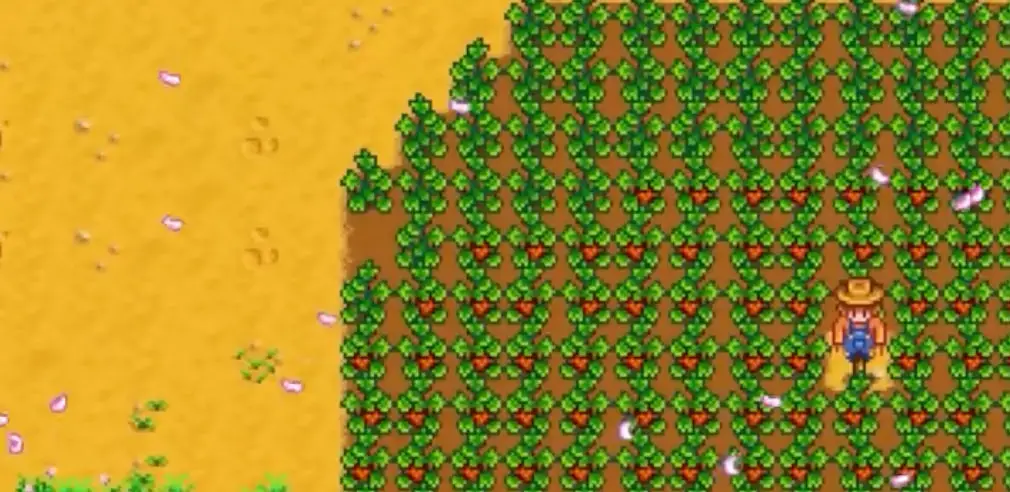Most Profitable Spring Crops in Stardew Valley: Bundles and Efficiency Tips
Hello, fellow farmers! In this tutorial, we will discuss the best crops to plant in spring, taking into consideration Bundles, and which ones are the most profitable. We will also analyze the time investment and overall efficiency of planting different crops.

Essential Crops for Bundles
For Bundles, Cauliflower, Green Beans, Potatoes, and Parsnips are must-plant crops. Parsnips are given to you by Mayor Lewis, while Cauliflower and Potatoes can be grown from mixed seeds. Green Beans must be purchased from Pierre. You can plant all four types on the first day or wait until the 5th.
Profitability of Spring Crops
In spring, you cannot brew alcohol, so you have to consider the direct selling income of crops. The daily income ranking is as follows: Parsnips (3.75) < Kale (6.67) < Green Beans (7.2) < Potatoes (7.67) < Cauliflower (7.92) < Strawberries (11.67). However, these figures only consider the seed costs, ignoring the time spent tilling, watering, and harvesting. The discrepancy may not be significant for small crop quantities, but it can be glaring for larger amounts.
The Inefficiency of Scaling Parsnips
Let’s take Parsnips as an example: suppose you spend 10,000 gold to plant 500 Parsnips between the 5th and 8th. After harvesting and selling them four days later, you get 17,500 gold, which you then reinvest in more Parsnips. In other words, you double your investment every four days. By the end of spring, you would have planted over 10,000 Parsnips and earned 160,000 gold. This seems like a lot, but it’s not feasible due to limited time and farm space. The game encourages players to earn money more efficiently and quickly, making low-efficiency methods like this unsuitable for the long run.
Spring Crop Profitability
In reality, spring crops are not very profitable. Take Strawberries, the most lucrative spring crop: investing 30,000 gold in 300 Strawberry plants will yield around 90,000 gold, which is only three times your initial investment. Fishing, tea sapling farming, or mining are more profitable alternatives. Hence, the primary purpose of spring planting is to level up your farming skills, unlock sprinklers, Casks, and Artisan equipment.
Leveling Up Farming Skills with Sprinklers
With basic sprinklers, you only need to plant 15 Parsnips and 16 Kale in spring. Once you have basic sprinklers, you can continue planting Strawberries to gain more experience, easing the pressure for summer. Strawberries also help maintain soil quality, reducing time pressure on the first day of summer. If you start with tea saplings and have enough funds in spring, you can skip Strawberries altogether to lessen the burden.
Experience Points and Time Management
Starfruit grants high experience points, and by planting 200 crops twice, you can reach the maximum level. In the early game, manually watering crops and using intermediate sprinklers in summer, you can save up funds until the 13th to plant Strawberries. Planting 100 Strawberries can help you reach Farming Level 6, requiring about 3 hours of watering per day, totaling 36 hours or roughly two days. Each rainy day saves you 6 hours, so three rainy days can save half the time. You can replace Kale with Potatoes, which grant 14 experience points compared to Kale’s 17. Just adjust the quantity accordingly. It’s not advisable to plant Cauliflower on a large scale, as it only grants 23 experience points but takes twice as much time, making it an inefficient choice.
Conclusion
In Stardew Valley, it’s essential to find the right balance between planting crops for Bundles, leveling up your farming skills, and making a profit. Spring is a time to focus on leveling up and preparing for the more profitable seasons, such as summer and fall. By carefully considering the efficiency of different crops and the time investment, you can make the most of your spring planting and set yourself up for success throughout the year. Remember, the key to a thriving farm is choosing the right crops and using your time wisely. Happy farming!